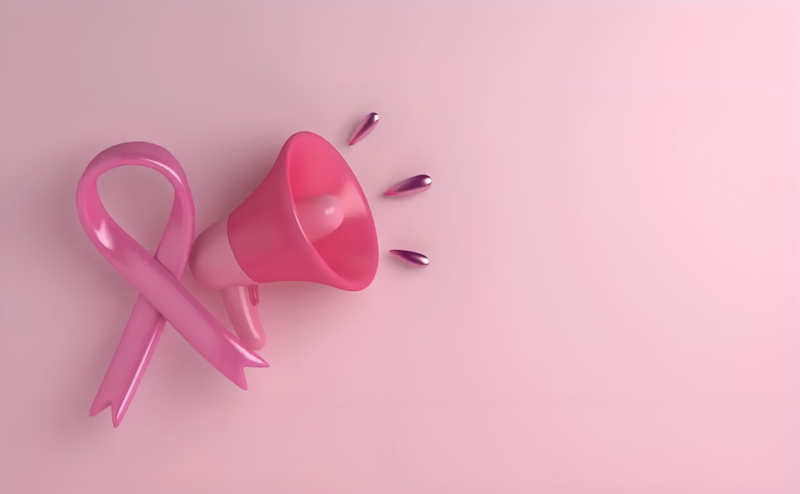Rajinder Kaur Saggu, Breast Surgeon, Director Breast Oncosurgery, Max Institute of Cancer Care, shared a post on LinkedIn:
“Breast pain, or mastalgia, can cause anxiety and discomfort for many women. While it’s rarely a sign of something serious, such as cancer, understanding the different types and causes of breast pain can help ease your worries.
From hormonal changes to lifestyle habits, there are various factors that can lead to breast discomfort, but the good news is that it’s often manageable with simple lifestyle changes and remedies. Let’s explore the types of breast pain and the best ways to alleviate it.
Types of Breast Pain
1. Cyclical Breast Pain
Cyclical breast pain is closely related to the menstrual cycle and typically worsens before your period. It is more common in women under 40 and occurs due to fluctuations in hormone levels. This type of pain is often described as a dull, heavy ache or tenderness in both breasts.
2. Non-Cyclical Breast Pain
Non-cyclical breast pain is not connected to your menstrual cycle. It may stem from hormonal changes, injury, inflammation, or even unrelated conditions such as cervical spondylitis, gastritis, angina, or a hiatus hernia. Unlike cyclical pain, this type can occur in one or both breasts and may feel sharp or burning.
Is Breast Pain a Sign of Cancer?
Breast pain is rarely linked to cancer. However, if you are over 40, it’s advisable to consult a doctor for a mammogram (breast X-ray) or an ultrasound scan. Women under 40 are usually offered an ultrasound to rule out serious concerns. Early diagnosis can offer peace of mind and ensure that any issues are detected promptly.
General Tips for Managing Breast Pain
1. Don’t Worry Too Much
Breast pain is usually harmless and not a sign of breast cancer. Knowing that the pain is not linked to something more serious can offer great relief.
2. Wear a Supportive Bra
Investing in a firm, supportive bra—especially a sports bra—can help minimize discomfort. A properly fitted bra reduces breast movement and offers much-needed support.
3. Limit Alcohol Consumption
Try to limit alcohol intake to one glass per day. Excessive alcohol consumption has been associated with hormone imbalances that may contribute to breast pain.
4. Maintain a Healthy Weight and Exercise Regularly
Being physically active helps maintain hormonal balance and reduces the risk of breast pain. Aim for at least 20 minutes of moderate exercise daily to keep your body in optimal condition.
5. Watch Your Diet
Reducing red meat, processed foods, fatty foods, and sugary treats can help lessen breast pain. A healthy diet promotes better hormonal balance.
6. Avoid Caffeine
Excessive intake of caffeine found in coffee, chocolates, and cola drinks can aggravate breast tenderness. Cutting back on these can offer relief.
7. Eat More Fruits and Vegetables
Incorporating more fruits and vegetables into your diet while reducing the intake of animal fats can help regulate hormones and reduce breast discomfort.
8. Drink Chamomile or Green Tea
Both chamomile and green tea have calming and anti-inflammatory properties that may help alleviate breast pain.
9. Consider Stopping Hormone Replacement Therapy (HRT)
If you’re on HRT, speak with your doctor about whether discontinuing it might help relieve breast pain. Some women find relief once they stop hormone therapy.
Supplements to Help with Breast Pain
- Vitamin D3: 1,000 IU daily can support overall health and may help with breast pain.
- Omega 3: 1-2 grams daily can reduce inflammation and pain.
- Flaxseed: 10-30 grams per day may help balance hormones and reduce breast tenderness.
- Vitamin E: 50-100 mg daily has been shown to reduce breast pain in some women.
Over-the-Counter Pain Relief Options
For localized pain, consider using Diclofenac gel 2% (Voltarol) or Ibuprofen gel. Apply it to the painful area 2-3 times a day to reduce discomfort.
Prescription Treatments (Rarely Needed)
In rare cases where breast pain is persistent and severe, a doctor may prescribe:
- Cabergoline: 0.25 mg once a week
- Tamoxifen: 10 mg once a day
For specific, localized pain, your doctor may also offer an injection of local anesthetic and steroids to relieve symptoms.
When to See a Specialist
If your breast pain continues or worsens despite following these tips, it’s essential to see a breast specialist. They may perform additional tests to rule out any underlying issues and offer further treatment options.
Breast pain can be unsettling, but it’s usually harmless and easily managed with a few lifestyle adjustments. By maintaining a healthy diet, wearing supportive bras, and incorporating gentle supplements, you can effectively manage your discomfort. However, if your pain persists, don’t hesitate to consult a healthcare professional for personalized advice.”

Source: Rajinder Kaur Saggu/LinkedIn
